| Diaphana minuta Brown, 1827 |
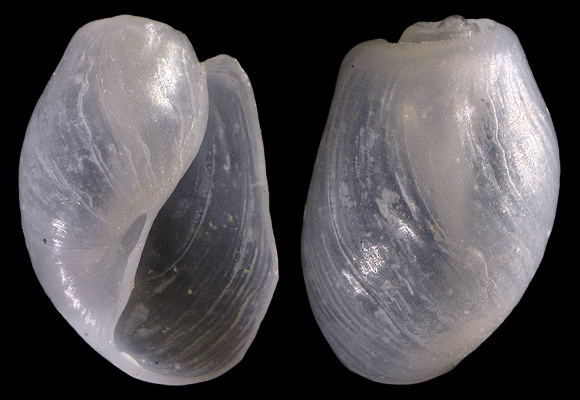 |
Circumarctic to Japan, British Columbia, Massachusetts, Canarias, Mediterranean. Predator on foraminifers and Hydrobia (Barnes, 1994) in soft bottoms, from the infralittoral to the continental shelf and slope, in brackish environments as well as in saltwater. Intertidally, it can be found under stones. « Shell ovato-cylindrical, of two very thin, transparent, hyaline-white, glossy turns, very faintly marked with growth-lines; the upper extremity broadly truncate, with a wide suture-groove, and a central rounded mammilliform prominence, which protrudes a little; the aperture oblong, anteriorly wide and rounded, moderately narrowed behind, extending the whole length of the shell; the outer lip projecting considerably behind in the form of a small lobe; the inner with a thin lamina folded back so as sometimes to form a false umbilicus; the colour hyaline-white. The animal can withdraw itself entirely within the shell. » – W. MacGillivray: History of the molluscous animals of Scotland, London,1844, p.334. Above: a specimen with the folded columellar lamina that forms the false umbilicus. 120m deep, on sediments, west of Calvi, NW. Corsica. 2,5mm. |
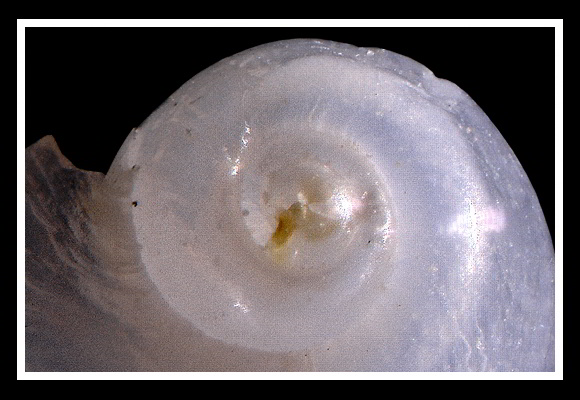 |
| The sutural groove on a specimen collected in grit near the high-tide mark at Sennen Cove, Land’s End Peninsula, Corwall, SW. England. |
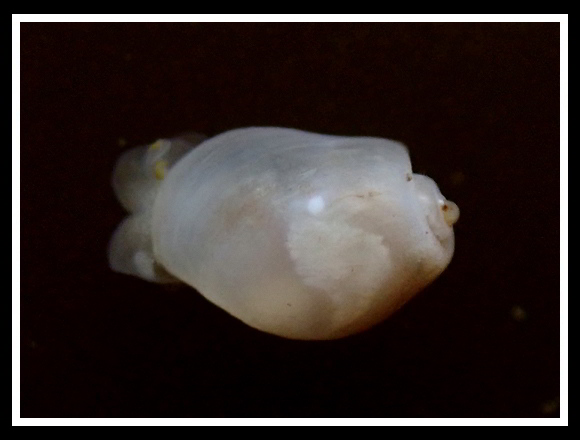 |
| Specimen found crawling on algae in a low intertidal pool at McKenney Point, Cape Elizabeth, Cumberland County, Maine, NE. USA. Shell about 3,5mm long. Original picture provided by J. Goddard for iNaturalist – (CC BY-NC). |
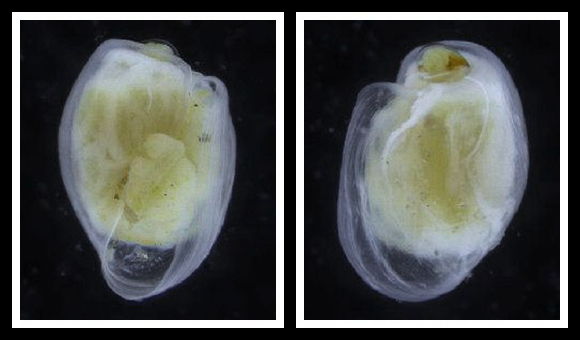 |
| Animal retracted. Collected in the Sea of Barents at 250m deep, off Rybachy Peninsula, Pechengsky District, Murmansk Oblast, NW. Russia. Original pictures provided by the University of Bergen for gbif.org – (CC BY-NC-SA). |
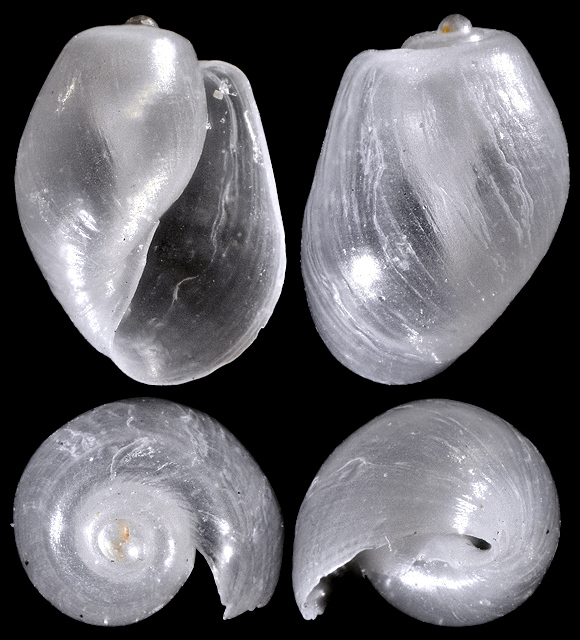 |
| 30-40m deep, on slightly muddy sand, Gulf of Roses, Girona, Catalunya, NE. Spain. 2,85mm. |
| — back to Diaphanidae — |